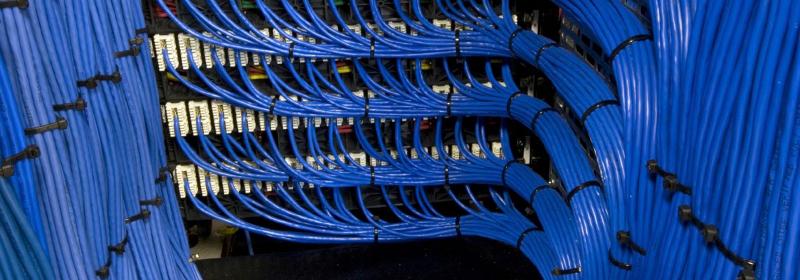
Over the years well-planned and well-structured telecom has become essential for the growth of an organization or business. Proper cabling and network solutions are the essences of a successful business. The structured cabling system ensures smooth operations, continuous flow of information, accommodates new technology, proper sharing of resources and much more. Today, wiring systems have changed a lot that needs to be designed not only to support data and voice but also audio video solutions such as video conferencing, cable TV and security camera- CCTV.
A full telecom system now has become very complex as it comprises of miles of cables and dozens of systems with plenty of complications that will make you think hard to choose the best from your available options. Velocity Technologies has come a long way to providing you top class telecom infrastructure consisting of leading turnkey network cabling services.
For any business, it is very crucial to know the basics of structured cabling before they opt for the suitable wiring network for their business.
Meaning Of Structured Cabling?
The complex network can connect your employees through via well-structured cabling, hardware connections, specialized equipment, appropriate pathways, working rooms & areas, and jacks.
A structured cabling system is a comprehensive telecommunication infrastructure which is device independent and starts where SP(Service Provider) terminates and is a point of the Network Interface Device (NID)or (demarc).
Subsystems Of Structured Cabling
Every business is unique. Therefore, the network has to be specific to meet the needs of the firm. The structured cabling needs to be verified before selecting structured cabling by the nature of the business. The structured cabling system consists of six subsections-
- Horizontal-the cables typically run horizontally above the ceiling or below the floor.
- Backbone- wiring between, telecommunication rooms, equipment rooms, entrance and across various buildings.
- Telecommunications room- holds all the termination equipment needed to connect horizontal and backbone wiring.
- Work areas-components used between telecommunication outlets and a user's workstation.
- Entrance facility-outdoor cable connects to the building's backbone.
Design And Installation Depend On The Standards.
The cabling installations are done by the set of standards. The standardization is essential to ensure high performance with an extremely complicated network of arrangements.To complete and maintain the system a usual method is required to transfer data and voice over a cabling through traditional media, connectors, and topology.
In additional to these cabling standards individuals who want to install cabling systems can become BICSI certified.
The American National Standards Institute (ANSI) combined with TIA/EIA is responsible for upholding practices in the US cabling industry. These standards are followed to design, install and maintain a proper cabling installation. The cabling scheme must be installed according to the set of standards so as to ensure high performance of the system and it should qualify the testing methods and algorithms.
For the optimum level of telecom infrastructure businesses have a number options to choose from such as VoIP, or an analog system. VoIP allows international call connections via the competent internet which works out to be a lot cheaper option. The cabling consists of many options where Cat 6a and Cat 7 cabling will allow 10-gigabit Ethernet over 100 meters of copper cabling. They are rated high with frequencies of 600mhz for transmitting data efficiently.
The structured network cabling standard solutions offer two basic choices of cables - copper or fiber. The selection of the cabling depends on your current and future network needs of bandwidth, distances, environment, cost. The copper was used in short-distance networks& low speed, whereas fiber was used in higher speed & long distance networks. Due to new advancements of the mixed network with fiber backbone and copper flat cable, allows a high rate of 10-Gigabyte which turns out to be an optimum solution.
The fiber optic cables use photons to transmit data at very high speed with a very minimized loss of data. The electric pulses or copper cable is limited, but fiber cable is an ideal solution for sharing data for larger systems covering long distance at very high speed. Fiber installations are typically defined as overhead fiber or underground. Velocity has fiber installers who can implement either one of these solutions.
Proper documentation and testing.
Large organizations need complex and a large set of cables and wires which require proper documentation and testing during installation for easy access. The structured cabling system or network has thousands of nodes which need maintenance and inspection to ensure smooth business operations. Therefore, the documentation and testing should be done at the time of installation.
The cabling system can be tested in some ways; the simplest and easiest way is to check that there are no breaks in any individual conductor inside the cable. The next step is known as wire map, which ensures that conductor at one end provides the conductor at the other end. The proper punching down of the cable, or terminations are made with punch down tool. These are easy steps mainly ideal for home networks, but enterprise or a business network is relatively critical therefore testing is essential too. The structured cabling certification is known as wire mapping. The cable performance is also measured with Crosstalk.